Precise spray systems compared: Five ways to radically reduce chemical use

Crop protection products are under intense scrutiny and pressure. Many important active ingredients have been banned or withdrawn and many others are facing the same fate. In the EU the plan is to reduce the use of pesticides by 50% by 2030.
To meet these considerable challenges sprayer manufacturers are responding by developing technology to increase precision. These developments improve accuracy by cutting drift, targeting products more precisely or cutting overlaps to ensure every drop counts.
At the same time the latest technology helps reduce environmental and operator exposure, which may also persuade regulators products are safe. For farmers, higher accuracy should result in better crop protection leading to providing higher levels of control, reduced resistance risks, active ingredient savings and, ultimately, more profit.
Identify the variables
All farmers know there are huge variations in the levels of infestation by weeds, pests and diseases in their fields. Currently, in almost all cases however, whole fields are sprayed with plant protection products to treat what are often isolated patches of the actual problem. A precision approach, targeting only the specific effected areas makes more sense environmentally and economically.
Text continues below image
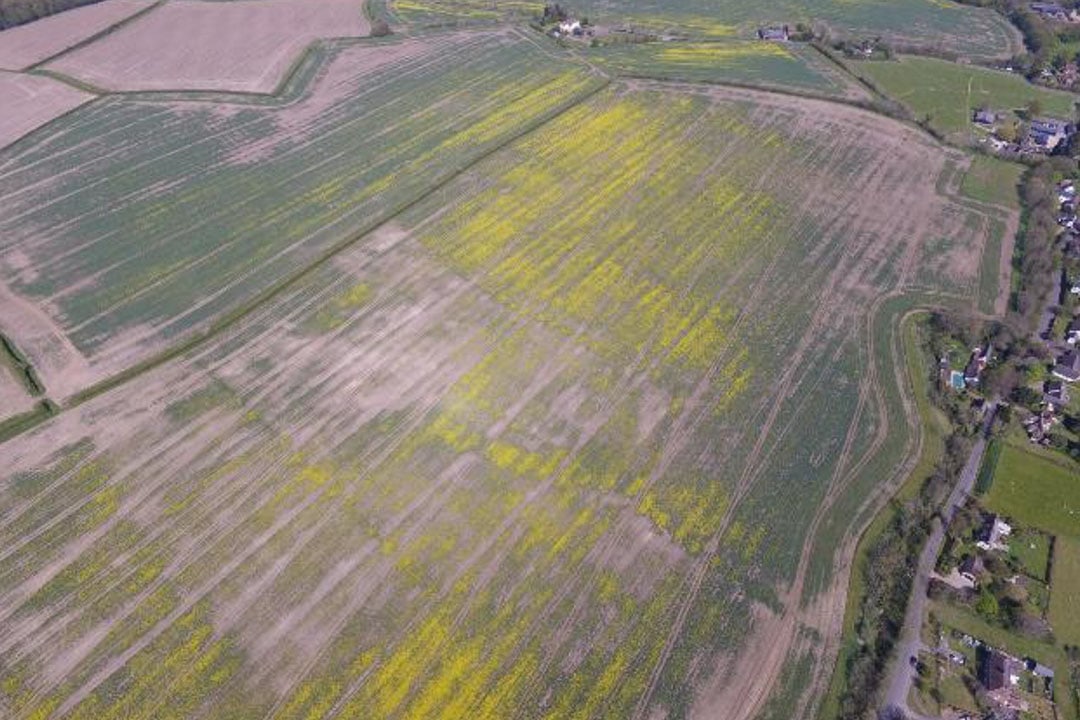
Precision application
There is now a range of technology that delivers applications far more precisely than the current, widely used ‘blanket’ treatments to whole fields.
- Band spraying. This is not new and already in use, particularly by vegetable growers
- Prescription. Now common for variable rate fertilisers and seeds, it is now being adopted for use with crop protection products
- Prescription banded. A combination of variable rates and precise placement of product in between or over the rows
- Optical spot spraying. Cameras and sensors targeting applications in real time to vary applications.
Text continues below image
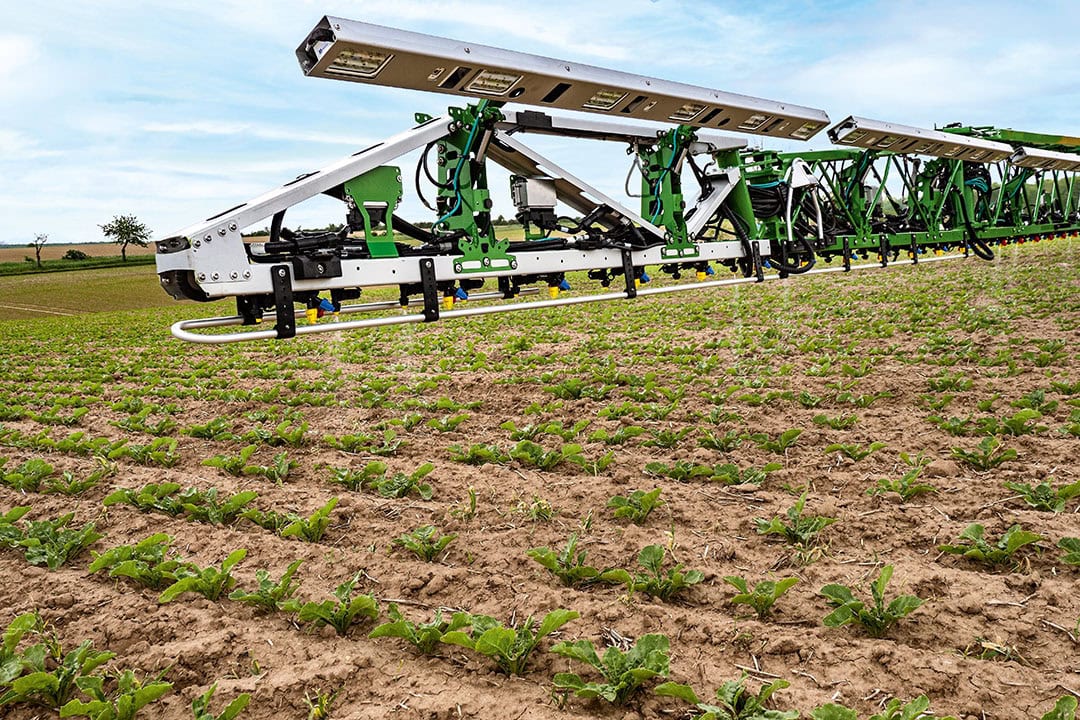
What about drones?
Under the EU’s Sustainable Use Directive (which also still applies in the UK), aerial applications – which include drones – are not permitted unless for operations with special derogations. Their use is banned because of the high risk of non-target exposure – to the operator and bystanders.
There are, however, huge drone fleets in Asia, particularly, China, Vietnam and Indonesia. In these countries drones are replacing workers with hand-held sprayers, essentially removing operators from a dangerous environment – resulting in massive safety improvements.
Drones are also useful for use in vineyards and other crops grown on steep hillsides. They not only provide better access, they also reduce the dangers that come from operating machinery on steep slopes. Drones are permitted for this use in Switzerland.
Text continues below image
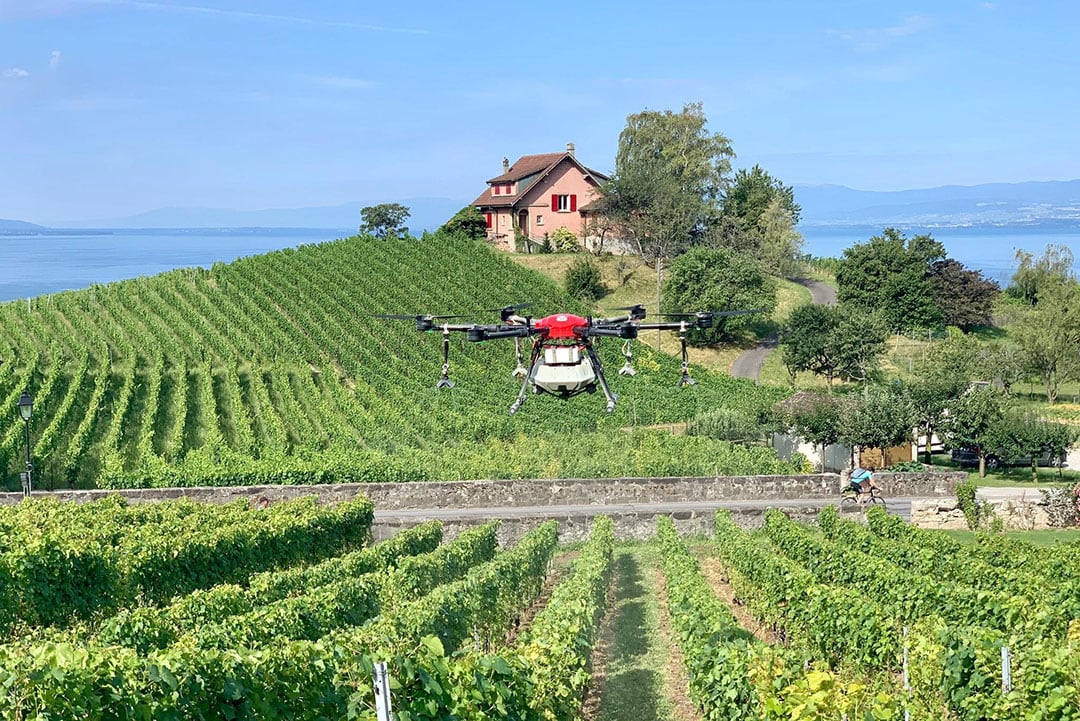
Erratic distribution
Although drones hold potential to accurately target problem areas, they do not deliver precise applications. Trials by Syngenta show the spray distribution is erratic – producing a coefficient of variation (C0V) of 64% to 109%, which compares to a CoV of just 7% for a ground-based sprayer or 30% from a standard aerial application.
Band Application
While not new, band application is a precise technique that can cut chemical use by 40% to 60% – depending on band width. It’s use is now widely adopted by vegetable growers, mainly because of the chemical savings and its ability to precisely target sprays both on or off the row.
There is a good choice of equipment available, with twin-tank machines that can apply, for example, an insecticide or fungicide on the row, as well as a herbicide inter-row. On-board camera guidance offers increased accuracy and ease of use that, in combination with a side-shift system, enables the sprayer to automatically follow the row.
Auto-steering also enables mechanical weeding to replace herbicides as well as working in tandem with an over-the-row spray application.
The challenge facing those looking to use band spraying is its relatively slow workrate of about 4km/h to 8km/h. While it could be suitable for other, not so specialist uses, such as weed control in oilseed rape, maize or other broad acre crops current workrates limits its wider adoption.
Text continues below image
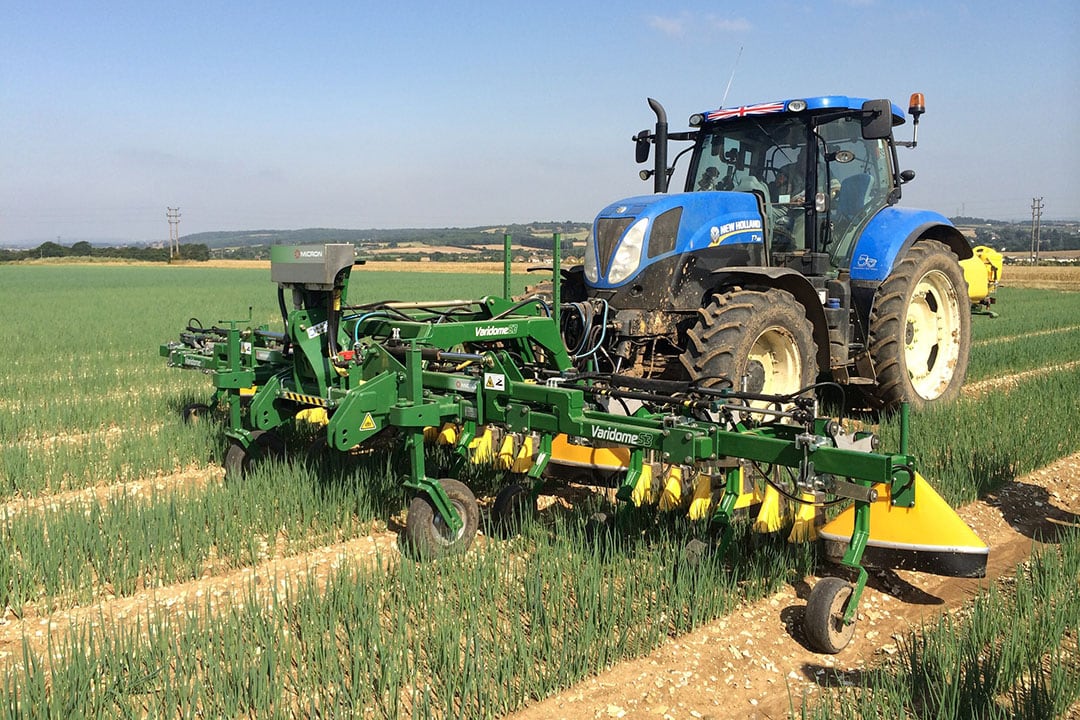
Cereals join the band
Syngenta has also carried out band spraying trials in a crop of winter barley, drilled with a wider coulter spacing to enable the sprayer to work up the rows. The trial tested the technique with herbicides applied between the rows.
This approach worked well in the trial, which was illustrated by a blocked nozzle that shows untreated blackgrass in the row. This proves, with some minor changes to equipment and refinement, band spraying does offer potential for large reductions in product use in broad acre crops.
Text continues below image
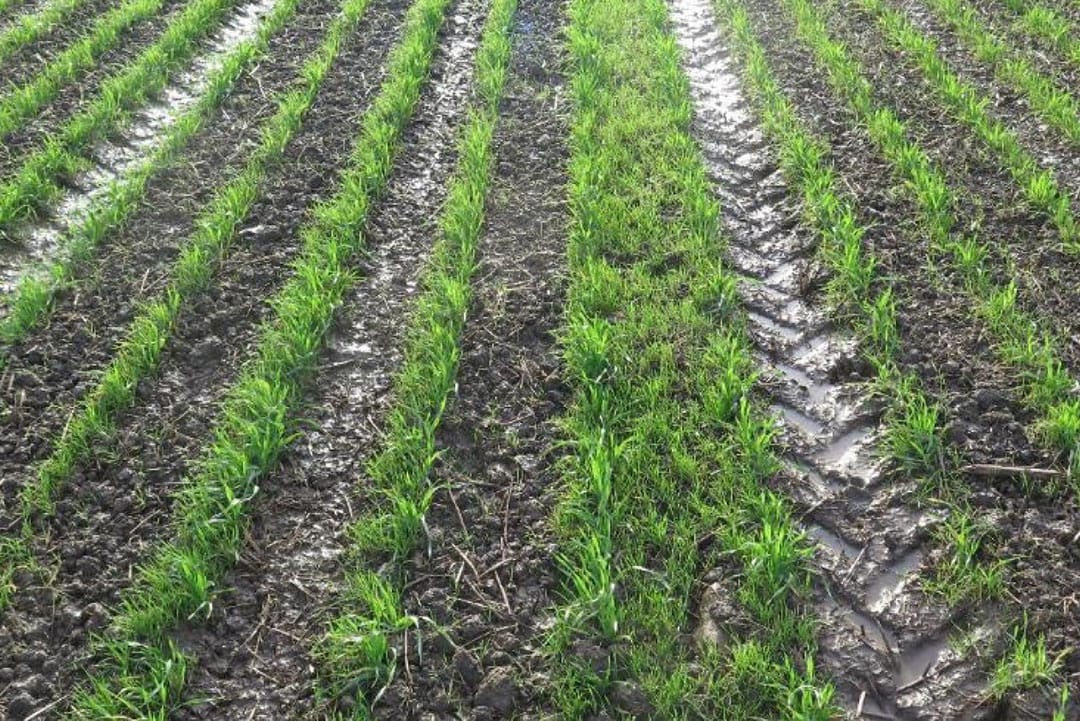
Variable rate applications
Many farmers, contractors and operators are now familiar with prescription maps and variable rates for drilling as well as liquid and solid fertiliser applications. Variable rate spraying is most likely to start with fungicide and plant grown regulator (PGR) applications in oilseed rate.
Creating a prescription map is a relatively simple process. The first step is to identify the agronomic challenge – such as poor establishment, patches of weeds or disease infestations.
These can be detected and mapped with normal field walking as well as by satellite or drone scans, which are used to make a digital image. This information and position data is then used to create a prescription map, which is transferred to the sprayer.
In theory the machine will automatically vary the rate according to the map. In reality users may encounter some real equipment and software compatibility issues.
Trials in the UK by Syngenta show variable rate PGR and fungicide applications to a patchy field of oilseed rape produced significant chemical use reductions. The ‘as applied’ maps, created after the application, reveal PGR was applied to just 15% of the field and fungicide to 68% (twice), using the system.
Current limitations
Current sprayer technology does, however, restrict the ability to vary and target application rates to specific areas. But these are not unsurmountable.

As applied maps from Syngenta variable rate application trials in oilseed rape show fungicide was applied to just 68% of the field and plant growth regulator to just 15%. – Photo: Syngenta Boom size/resolution: The resolution of the application is determined by the section width. Individual nozzle control does, in theory, enable applications to be targeted to 50cm. But some systems will only apply variable rates with nozzles grouped in sections
- Spray quality: Normally the only way to change the flowrate on a sprayer is for the rate controller to adjust the pressure. To double the flowrate the pressure has to increase by four times. This will create smaller droplets as the speed increases and larger ones if the machine slows down
- Turn down ratio: Essentially this determines the window of tolerance in which a conventional hydraulic nozzle is able to vary the output using pressure. In most cases this will be limited to a rate variance of no more than 30%
- Water volume: Changing the pressure will also alter the volume applied and this could result in inconsistent coverage, reduced efficacy and effect control
- Tank mixes: Many treatments will be applying a tank mix of more than one product – such as a herbicide, fungicide and PGR – at the same time. The difficulty is you may not want to vary the fungicide, but apply herbicide and PGR only to certain areas.
PWM possibilities
Pulse Width Modulation (PWM) is an electronic system that uses solenoids to turn (usually) individual nozzles on or off at rates up to 100 times a second. This alters the rate without changing the pressure and means the droplet size is unaffected by forward speed differences or other changes. This also enables operators to vary the application rate while maintaining the correct droplet size.
PWM resolution
Many of the PWM systems currently on sale already provide a facility to apply variable rates – but it is unlikely to do this to a resolution of a single nozzle – at 50cm or 25cm spacings. Check the specification because many limit the function to a number of nozzles clustered into ‘sections’.
Text continues below image

Turn Compensation
Another benefit of PWM is it can alter the individual flow rate of different nozzles along the boom. This prevents over- and under-application when turning, improving accuracy as well as helping to combat the risk of resistance building up due to regular under-dosing. It’s important to note that PWM is not compatible with many air induction nozzles, used to reduce drift.
Text continues below image
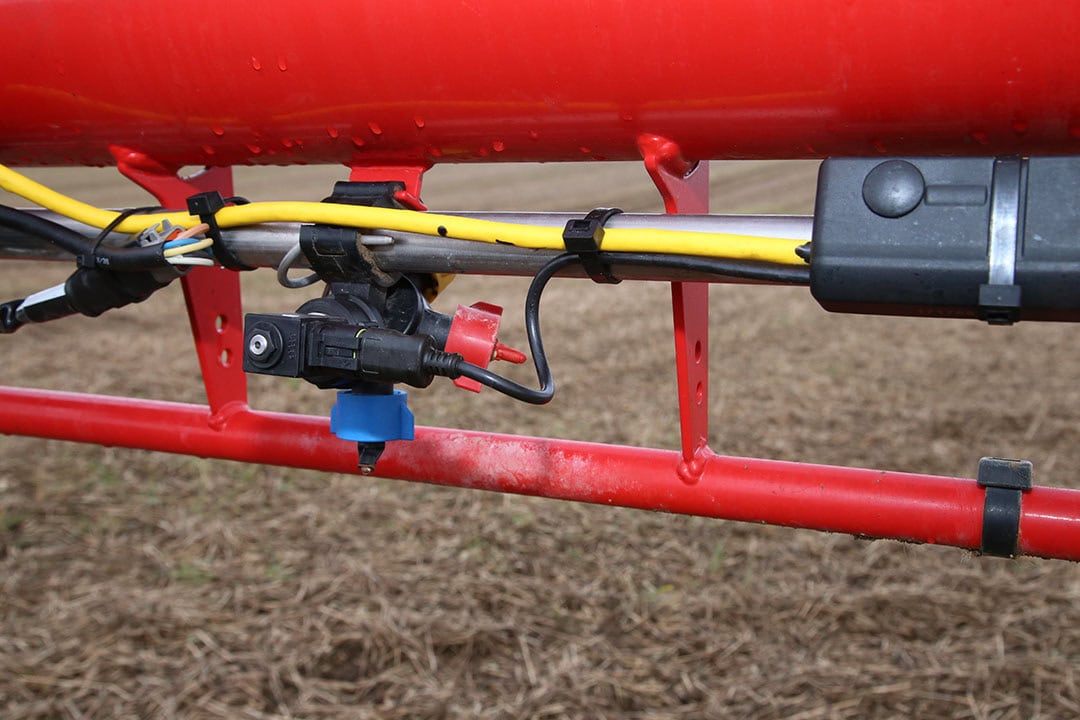
Direct injection
One way overcome the difficulties of varying spray applications, without having to use separate passes for different products, is to directly inject undiluted products into clean water in a separate sprayline.
While direct injection has been around since the 1980s, it is one of the keys to improving precision by targeting products to specific areas, as well as varying rates of different products. Another benefit is it maintains the water volume.
Undiluted product, held in a tank, is pumped directly into several injection points spaced evenly on a separate sprayline on the boom, with the mixed spray continually recirculated at a pre-set pressure. There is no further need for mixing, enabling an instant start as soon as the nozzles are switched on.
Text continues below image
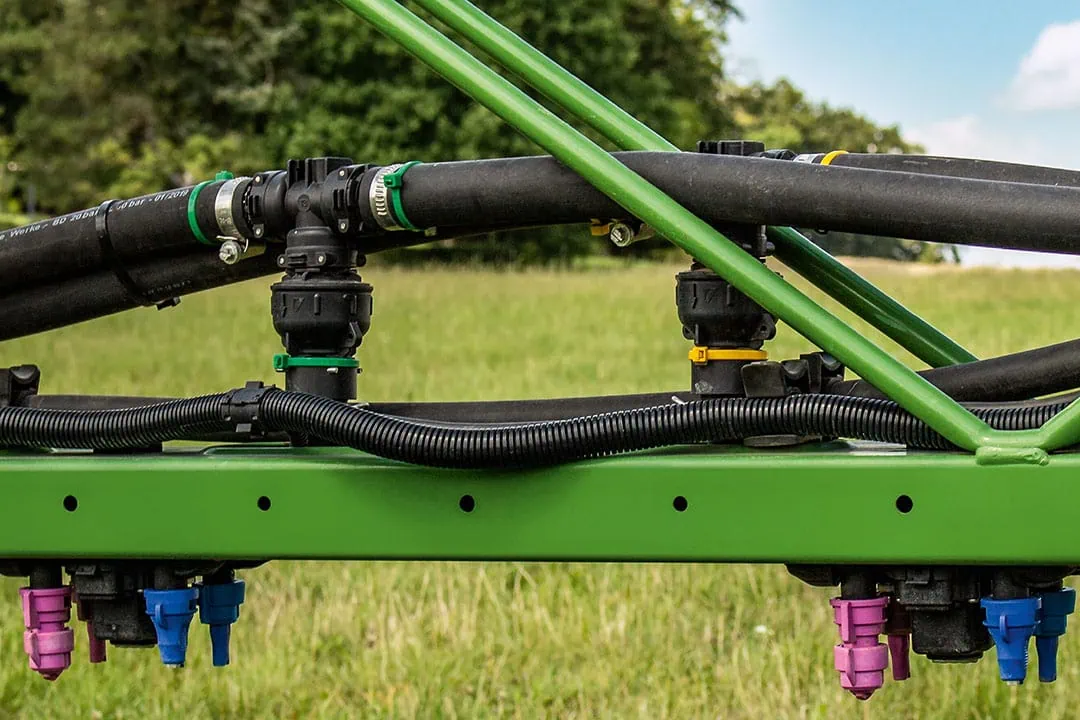
Optical spot spraying
Optical spot spraying delivers on-demand spray treatments that are detected and applied in real time. Sensors or cameras on the boom scan the crop or ground and send this data to the terminal, where it is analysed by an algorithm to detect the presence of weeds, pests or diseases. It then turns on the appropriate nozzles to apply to the target or area.
Currently this is largely confined to ‘green on brown’ spot spraying. Essentially these systems use cameras to identify ‘green’ weeds on bare soils and turn on the appropriate nozzles to spray them. Users in Australia and USA report chemical savings of up to 80% or more.
Weed identification in growing crops (green on green) is considerably more difficult to achieve – particularly in cereals in typical Northern European situations. While algorithms to do to this are currently being developed by many of the larger manufacturers and numerous start-ups, proven systems are still not yet at a fully commercial stage.
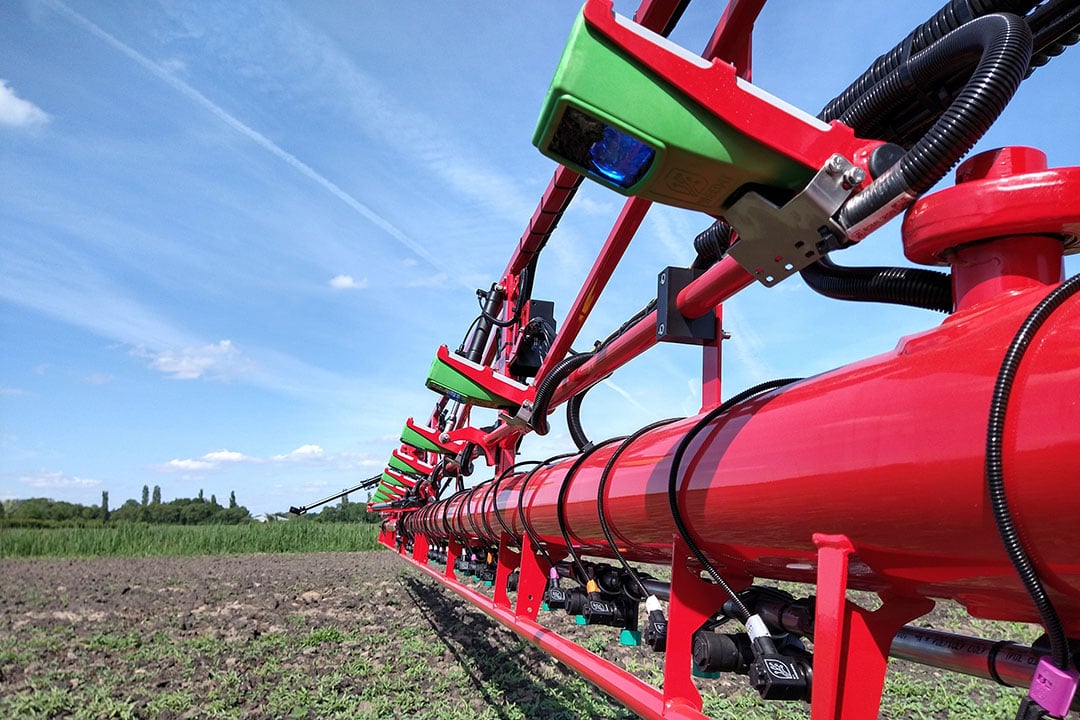
Join 17,000+ subscribers
Subscribe to our newsletter to stay updated about all the need-to-know content in the agricultural sector, two times a week.



